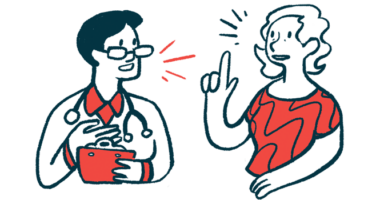Gene Mutation Linked to Hypoparathyroidism, Certain Features in Sanjad-Sakati Syndrome Patients, Study Reports

Iranian patients with Sanjad-Sakati syndrome (SSS) show specific gene mutations associated with hypoparathyroidism, severe growth failure, and facial structural alterations, according to a study.
The study, “Clinical features and tubulin folding cofactor E gene analysis in Iranian patients with Sanjad—Sakati syndrome,” appeared in the Jornal de Pediatria.
SSS, also known as hypoparathyroidism-intellectual disability-dysmorphism, is a rare, congenital syndrome exclusively reported in children from parents who are related to each other in Arab populations of the Middle East. It is characterized by low blood levels of calcium, or hypocalcemia; high levels of phosphate, or hyperphosphatemia; and low levels of parathyroid hormone (PTH).
Studies have reported the occurrence of mutations in the TBCE gene in SSS patients. This gene provides instructions for the production of tubulin-specific chaperone E, a protein required for the formation of alpha-beta tubulin complexes found in cellular microtubules — hollow rods responsible for cellular shape and the development of parathyroid glands.
To date, TBCE gene mutations had only been reported in Kuwait and Jordan Arab populations. Aiming to provide additional information on these molecular defects, researchers at Ahvaz Jundishapur University of Medical Sciences in Iran characterized the clinical features of Iranian SSS patients with TBCE mutations.
The investigators included a total of 29 cases, from 27 families and 23 Iranian-Arab kindreds, of hypoparathyroidism clinically diagnosed as SSS from 2007-2017. These cases were selected from the pediatric endocrinology clinic of the Abuzar Children’s Hospital in Ahvaz.
According to the researchers, this is one of the highest numbers of SSS patients screened in the last decade. Of the 29 patients, 17 were male and 12 were female. In 26 of the 27 families, the parents were related to each other, including double first cousins, first-degree, and second-degree cousins.
Clinical and laboratory data were collected from birth. Genetic analysis was conducted with peripheral blood samples of patients and their parents.
Results revealed that 27 patients were diagnosed with seizures related to low calcium between the ages of 14 days and 9 months. The two other infants were referred for clinical evaluation in the first three months of life due to poor growth before showing symptoms of hypocalcemia.
All the children had small, deep-set eyes, a bulbous or beaked nose with or without a depressed nasal bridge, a long philtrum (or medial cleft) with a thin upper lip, low-set ears with large and floppy earlobes, undersized jaw, delayed development of teeth and early decay, and small hands and feet. Additionally, all were born with growth delay and had severe symmetric growth failure.
As seen in prior studies, the patients had varying degrees of intellectual disability and developmental delay, but no cardiac or genital abnormalities. Nearly one-fourth of the patients required anticonvulsants for seizures unrelated to hypocalcemia.
“The existence of permanent congenital hypoparathyroidism from the intrauterine onset, severe postnatal growth failure, and facial dysmorphism with any degree of developmental delay strongly suggests SSS,“ the authors wrote.
Patients exhibited low levels of calcium, low to normal PTH, and high phosphorus. The patient with the lowest value for PTH exhibited congenital cataracts, an indication of severe, long-standing hypocalcemia. All patients started receiving treatment with calcium supplements and an active form of vitamin D.
Genetic analysis showed that all 29 patients were homozygous (both gene copies affected) for the same mutation in exon 3 of TBCE, which had already been reported in Arab SSS patients in the Middle East. Exons are the bits of DNA containing the information to make proteins. Both parents of all patients were heterozygous (only one gene copy affected) for this mutation.
“In conclusion, the detected mutation and presenting clinical manifestation of this rare disease in Iranian patients makes it much easier and faster to diagnose and differentiate this syndrome,” the researchers wrote.
It can also help to find carriers and facilitate prenatal diagnosis of SSS in high-risk families, they added.






